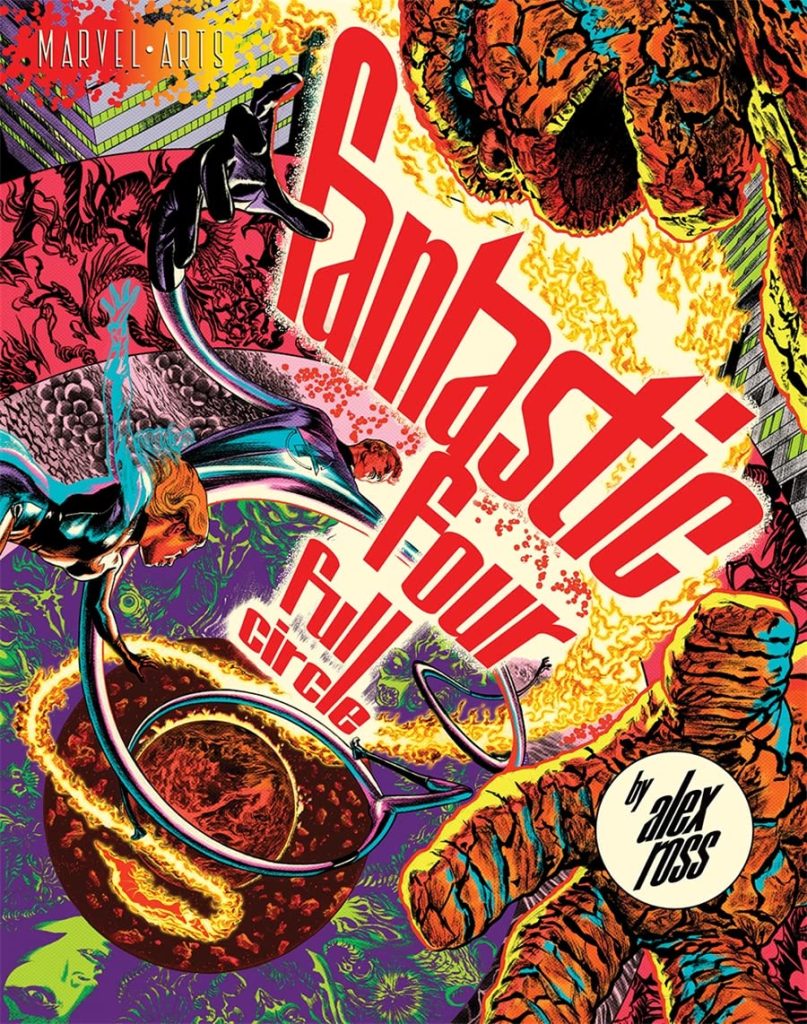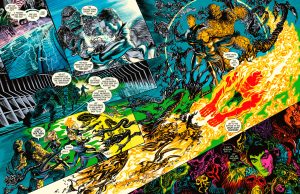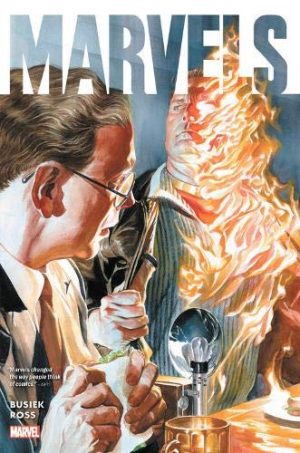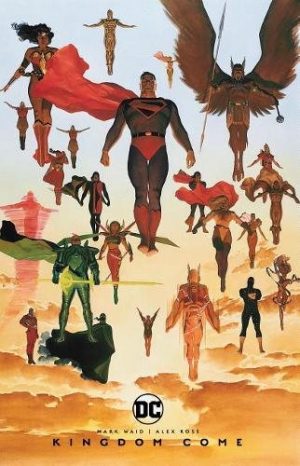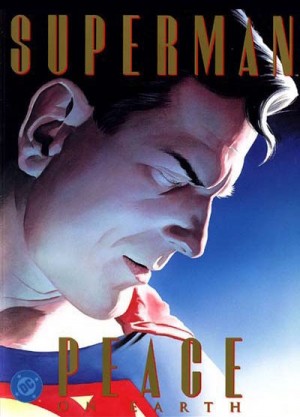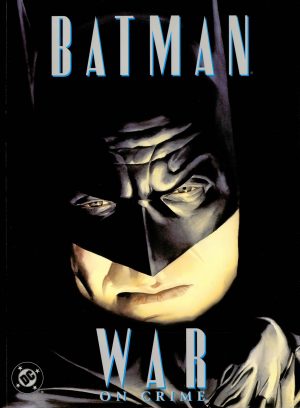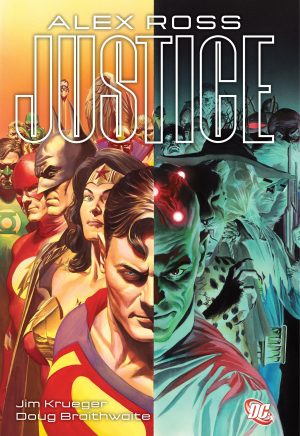Review by Woodrow Phoenix
Fantastic Four: Full Circle is a 64 page hardcover by Alex Ross, working solo on both the drawing and the writing of this tribute to the golden 1960s period of Jack Kirby and Stan Lee’s Fantastic Four. Best known for his lush painted images that are all about dramatically-lit, shiny ‘realism’ with a romantic edge, here Ross adapts his methods to create pen and ink art in the tradition of such black and white comics masters as Stan Drake, Alex Raymond and Neal Adams. The FF team members are given a powerfully glossy, period-appropriate 1960s movie star sheen, with Reed Richards a chiseled, Burt Lancaster hunk, Sue Richards channeling Ursula Andress or Mamie Van Doren, Johnny Storm a square-jawed, pin-up perfect Jeffrey Hunter-styled athlete and Ben Grimm a less abstracted version of his classic Kirby/Buscema angular rockpile. But Ross doesn’t keep it all on the photoreal side. There’s a definite Jim Steranko flavour to his stylised techno backgrounds which go full Kirby & Sinnott when the action starts with an invasion of the Baxter Building by creatures from the Negative Zone.
The primordial anti-matter chaos dimension is the source of many great Fantastic Four moments, so it’s no surprise that this story takes the FF there once again. Ross handles the transition from here to there with a spectacular double-page interpretation of Jack Kirby’s genre-collapsing collages. Look closely and you’ll see his version of those constructions is painted rather than photographed, and then dot-screened to create the same feeling. From this point, Full Circle is a riot of splash pages and superbly kinetic double-page spreads as the team encounter two old foes before arriving at the explosive domain of a third.
Visually, Full Circle more than lives up to any expectations fans will have for a full-throated roar of ambitiously psychedelic and dramatically staged Kirby-style action. The oversized pages present the art in deluxe fashion and there’s even a double-page foldout on the dustwrapper making this all look and feel like a publishing event. However, the writing is not on the same level as the visuals. The laboured dialogue is a lifeless impression of Stan Lee’s mix of spiky banter and odd, effective bombast, and the plot is pretty thin. The story moves along on rails from one situation to the next with the team not particularly tested at any point, so ends up like a guided tour through some mildly perilous locations and then back to the Baxter Building in time to put the kids to bed. Still, it is definitely a pleasure to see a Fantastic Four book that has the invention and good-natured sense of wonder of the classic run. If you can treat the text as a translation garbled on the way here from 1970, you will enjoy Full Circle as an affectionate retro treat.
